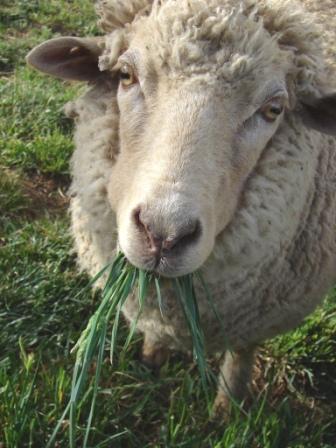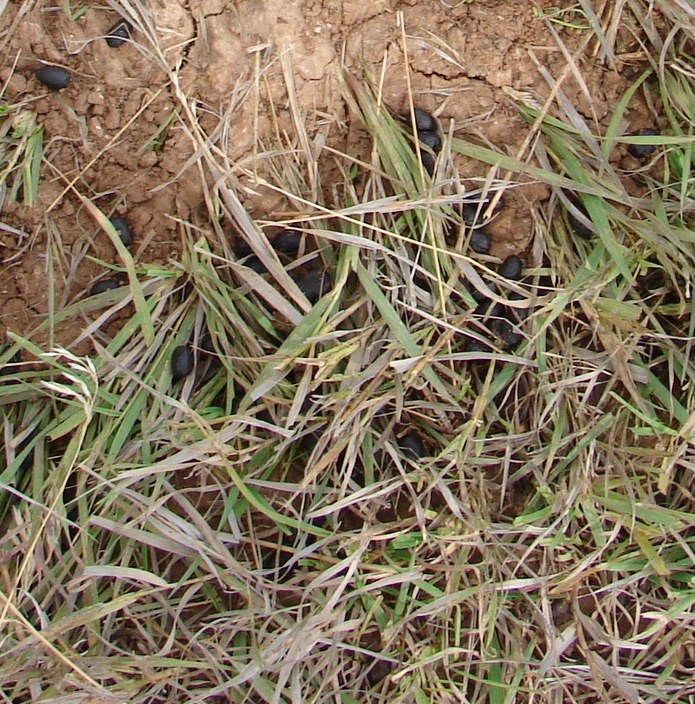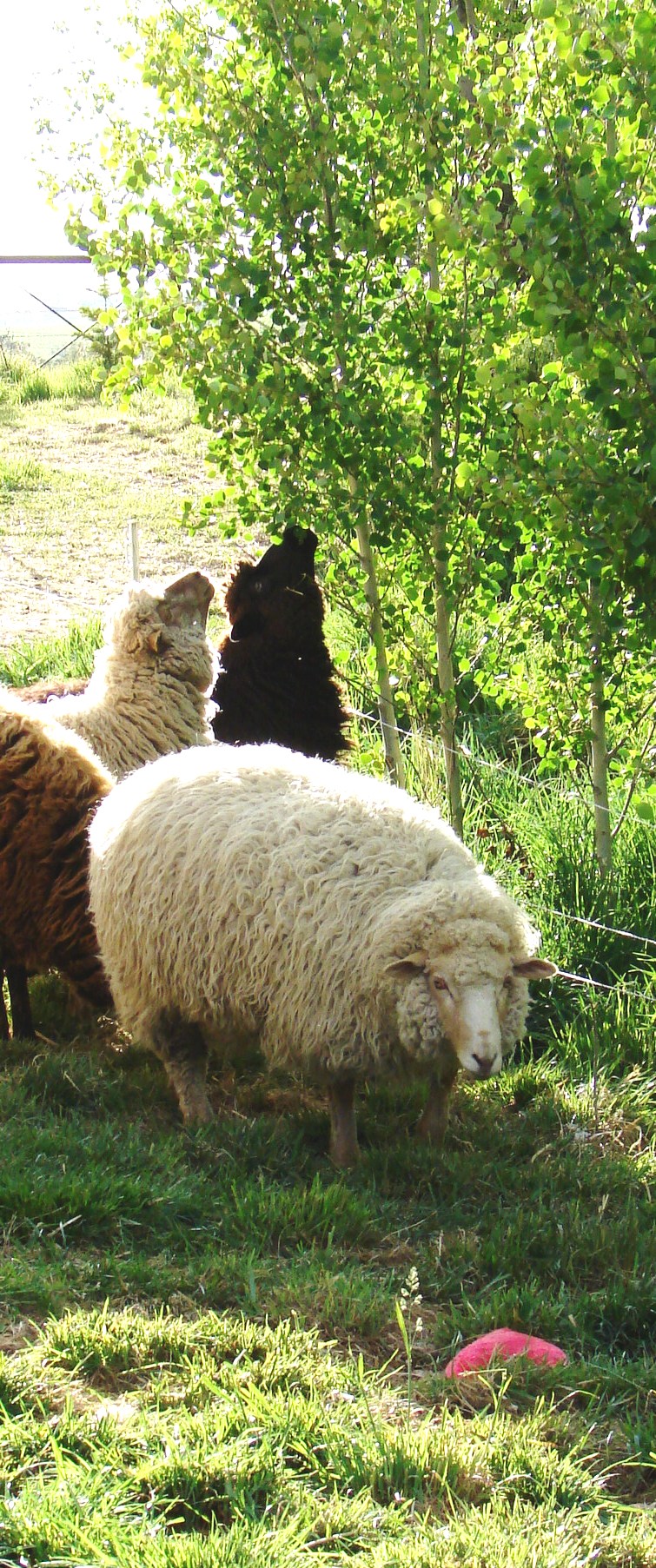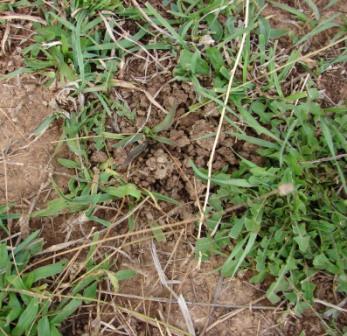by Cindy Dvergsten, Holistic Management Educator
|
Cindy Dvergsten
 Controlled with easy-to-move temporary electric fencing, our Navajo-Churro Sheep are ideal for working in small nooks around the home and yard at Arriola Sunshine Farm.
|
Have you ever experienced a time when suddenly a light bulb comes on? Such was the case for me while on a ranch tour in 1995 near Rocky Mountain House, Alberta, Canada. Randee Halladay was showing us around their home when she noted that their lawn mower had not been used for a number of years. She explained how she allowed their cattle to do the lawn mowing for her, saving both time and money.
Although at the time I did not have grazing animals, the idea of "natural lawn mowers" lodged in my mind. I am happy to say now that our gas-powered lawn mower has been idle for several years.
 |
 |
The grass is converted into natural fertilizer (manure). No clippings to mess with!
| |
Multiple benefits of grazing animals
The benefits of using natural lawn mowers go beyond saved time and money. The 1/4 acre of yard and miscellaneous areas around the house we graze provides approximately 1500 pounds of grass forage. This is enough forage to produce about 40 pounds of lamb meat and several pounds of wool with a retail value of approximately $345.00 USD (2008 prices).We get approximately 200 animal days of grazing from our yard area. During this time the sheep deposit about 600 pounds of manure. This amount of manure contains 10 pounds of nitrogen and 8 pounds of phosphate that are readily available for plant growth. This would be similar to the amount of fertilizer recommended for a spring treatment for average lawn care.
 The lambs are adept at edging only the sidewalk!
|
According to Consumer Reports, small, two-stroke engines used in conventional lawn-care equipment are big polluters. Mowing a lawn one hour per week for a summer consumes only 10 gallons of gas, but releases an average of 148 pounds of carbon dioxide emissions per year. An average riding mower emits substantial quantities of smog-forming nitrogen dioxide as well.
Grass removes carbon from the air through photosynthesis. Most of this carbon will return to the air as carbon dioxide when the grass plants decay. However, a healthy productive grassland can take in more carbon than it releases, storing the excess as long-lived humus and organic matter that builds fertility and water-holding capacity in soils.
Grass and grazing animals are nature's complementary way of cycling carbon and building grassland soils. The impact of hooves, and the biological contribution of dung and urine, helps maintain the soil microbes that keep grasslands healthy and productive.
 During World War I, First Lady Edith Wilson kept sheep on the White House lawn to conserve manpower and to help produce wool.
|
Martha Holdridge, who grazes cattle on pasture in West Virginia, has recorded a doubling of soil carbon in less than a decade. According to Ed Rayburn, an agronomist at West Virginia University, the additional soil carbon more than compensates for the methane generated by the cattle. Soil contains more carbon than the atmosphere and vegetation combined.
|
Cindy Dvergsten
 Our sheep also enjoy trimming the trees, especially the aspen and weeping willow.
|
In 2001, the Soil Science Society of America drafted a position paper (pdf) that included this statement: "Worldwide, SOC [soil organic carbon] in the top 1 meter of soil comprises about 3/4 of the earth's terrestrial carbon; nevertheless, there is tremendous potential to sequester additional carbon in soil. For example, many cropland soils of the United States have lost as much as 50% of their original SOC due to the effects of land clearing and tillage. Such conventional farming practices 'burn' SOC just as we burn fossil fuels today. However, in the case of SOC this historical decline can be reversed, which is not the case for fossil fuel reserves."
The carbon cycle is aided by grazing animals
 The photo shows "casts" left on soil surface from where the nightcrawlers burrow into the ground. Notice the absence of manure and the new growth occurring in the grass plants.
|
Within 10 days the manure left by the sheep in our yard is gone. Nightcrawlers, a type of earthworm, eat the manure and carry it down into their burrows to supply food for their young.
The key to preventing overgrazing is to allow the animals to graze in harmony with the plants' natural growth cycle. This requires grazing for a short time ("mowing"), and then letting the plants have time to regrow before they get grazed again. Holistic Management Planned Grazing helps us to be in the right place, at the right time, for the right reason with our sheep. By grazing to maximize plant health and growth, we keep a healthy lawn and cycle plenty of carbon back into our soil. We're using sheep to help our grass sequester carbon, just like wild grazing animals speed carbon sequestration in nature.
When grazing occurs within the limits of nature's boundaries, grazing animals like our sheep become a valuable tool of management. And in this case, sheep are managing our lawn.